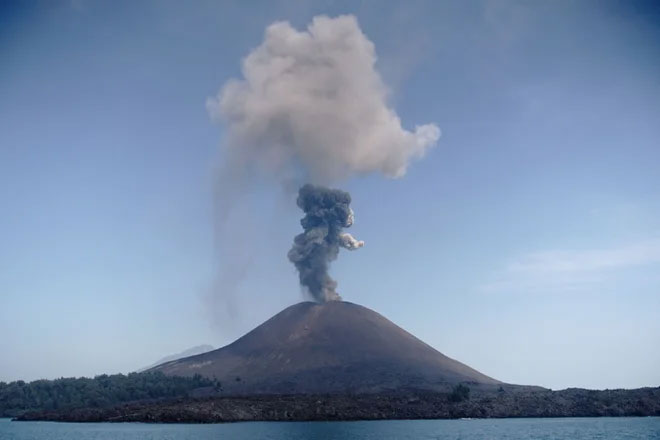The ash plume formed from the eruption of Anak Krakatoa volcano in Indonesia reached a height of 1,500 meters on February 5, according to the country’s Geological Agency.
According to images from the European Space Agency obtained from the Sentinel-2 satellite following the eruption, the volcano’s crater emitted a dense column of gas and ash, as reported by EarthSky. The Anak Krakatau volcano observatory has raised the alert level to orange. Aircraft passing through the area need to be cautious of the ash in the air.
The volcano erupted on February 4, according to the South China Morning Post. Indonesian authorities have warned residents to stay away from the volcano within a 2 km radius.
Previously, since mid-January, Anak Krakatoa had shown signs of increased activity, according to the Indonesian Natural Disaster Management Agency. This volcano is not located on land but sits in the Sunda Strait, between the two large islands of Java and Sumatra.

Anak Krakatoa volcano eruption in 2018. (Photo: AFP).
Anak Krakatoa (meaning “Child of Krakatoa”) was formed after the historic eruption of Krakatoa volcano in August 1883, which resulted in approximately 35,000 fatalities.
The destruction at that time was estimated to be equivalent to 200,000 tons of TNT – about 13,000 times more powerful than the atomic bomb dropped on Hiroshima, Japan in 1945. Krakatoa also expelled around 25 cubic kilometers of rock and ash. The explosion of the volcano could be heard in Australia, located 3,600 kilometers away.
In 2018, Anak Krakatoa experienced a major eruption that triggered a tsunami on the islands of Sumatra and Java, resulting in 430 deaths, despite the area near the volcano having a sparse population.
The tsunami at that time was over 100 meters high and could reach up to 150 meters, according to research by scientists in Tokyo and London. This is considered the deadliest volcanic eruption of the 21st century.

















































